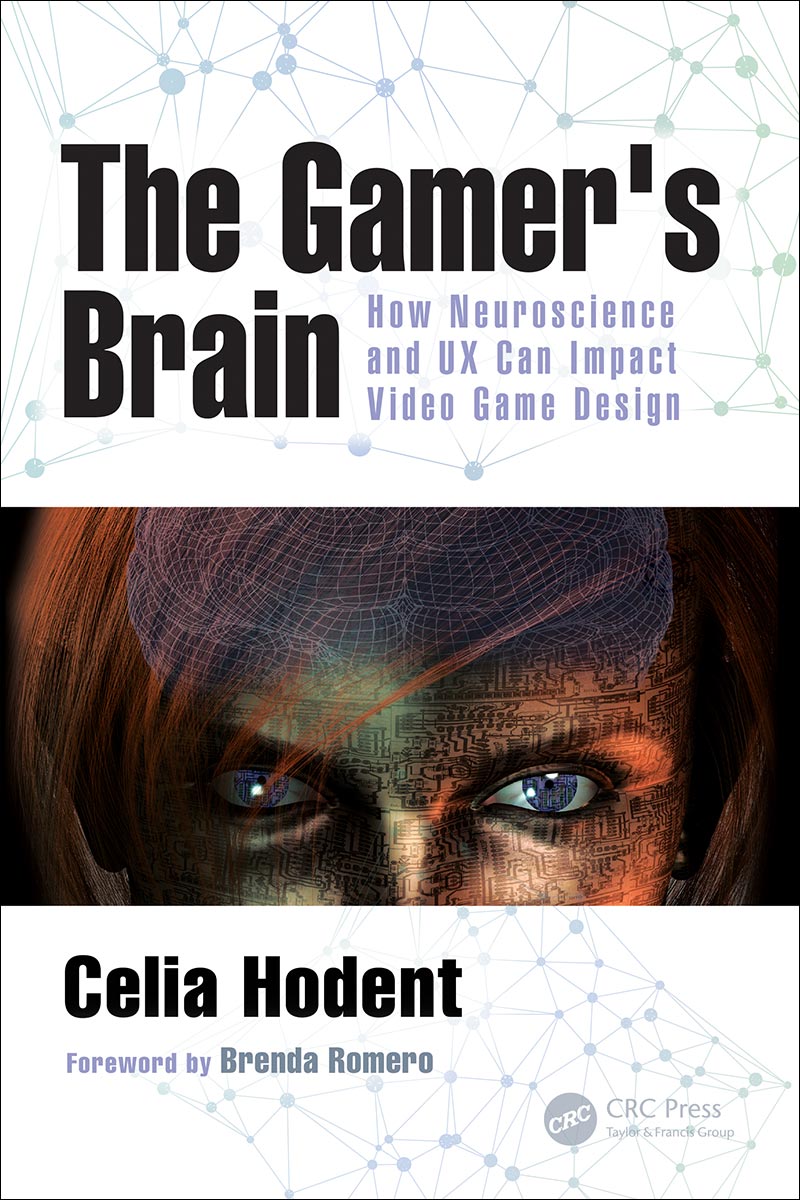The Gamer's Brain - Book Excerpt
Chapter 16: UX Strategy
Having a user experience (UX) mindset is not only about offering compelling experiences to your audience, it is also about good business (Hartson and Pyla 2012). UX practices can help developers ship a game that contains less friction points and is more engaging and that will be more likely to reach a broader audience and make more revenue. Moreover, the earlier UX issues are identified, the less it costs to fix them. Therefore, user experience should have a strategic position within a project—across the development stages and at the studio level. Striving for a great user experience requires coordination. UX is not just about art, design, engineering, defining and implementing the experience; it’s not just about marketing defining the target audience and what makes them tick; it’s not just about business intelligence defining the monetization strategy; and it’s not just about executives defining business goals and company values. It’s about all of this. UX should be at the intersection of all of these disciplines and should be the concern of everyone. Because, in the end, it is how your audience will experience your games, products, and services that will matter. It is your players’ perception, understanding, behavior, and emotion that will count. This is why merely having a separate UX team in the organization—although constituting a good starting point—likely will not make enough of an impact. UX practitioners can help provide some invaluable insights and methods, but these tools need to be embraced by everyone in order to reach a common goal. (…)
UX at the Studio Level
In order to have a true user experience mindset at the studio level—one that is player-centered, executives need to recognize the importance of this new discipline in game development. They need to understand its strengths and limitations. Convincing upper management that adopting such a mindset will likely help the studio ship engaging games more efficiently can be tough. Within the game team, it’s always possible to find some developers interested in UX who will agree to try a few things. After small wins demonstrating the benefit of UX practices, which can happen fast given the multiple iterative cycles, trust can be built more easily. With upper management, though, a clear win can often be demonstrated only when the game is live, when business intelligence metrics are gathered, and when some UX issues likely can be linked to a drop in retention or revenue. And even then, given the number of factors influencing these metrics, it can be complicated to make your point. You could try to calculate the return on investment of UX, but it’s not particularly easy to do that either. Gaining reliance on a UX approach is usually a long road, one that requires staying true to the scientific approach and offering neutral and less-biased insights informed by data and cognitive science. Corporate UX maturity takes time. According to Jakob Nielsen (2006), there are eight stages that organizations need to go through, from hostility toward usability (Stage 1) to ultimately becoming a user-driven corporation (Stage 8). Nielsen suggests that it could take a company about 20 years to reach Stage 7, where user-centered design is integrated and the quality of the experience is tracked, and another 20 years to go from Stage 7 to Stage 8. (…)
Donald Norman, in his talk at the Game UX Summit (Norman 2016), argued that UX deserves a place at the management table and that it should be represented by a dedicated executive position. Senior executives should be ready to change their mindset for this to happen, not to mention that UX managers should also be ready to endorse that responsibility. Although we are not there yet in most cases, UX has greatly developed in the game industry and is now seriously considered. (…)
One last thing that has helped me communicate more clearly about UX is to regularly question why the target audience would care about a new feature, a multiplayer event, a marketing campaign, or items on sale (see Sinek 2009). For example, if the game team wants to add a feature (which will likely take resources away from fixing UX issues), ask them for what purpose the players would use that feature. If upper management believes that the game needs a new mode, ask them why players would care and if it would fit the overall experience—and so on. Game development is about making a series of choices and trade-offs under some level of uncertainty. It can be easy to lose focus regarding what the goals ultimately are. Of course, goals need to be refined too, and the overall strategy for a game can (and probably will) shift as development progresses. However, chasing too many rabbits can result in a mediocre product that ends up not offering any compelling experience on any level. Therefore, it can be critical to stay focused on the core experience, on why players you are targeting will care before making any key decision about the game—especially because time, budget, and technical constraints can be quite significant in video game development. Aiming for the “why” will allow for a thought process and an iterative process focused on the meaning for players, which is very important for motivating and engaging your audience (see Chapter 12). It could also be useful for marketing to have this mindset when selling the game because focusing on what players can do in the game (e.g., shoot, explore, craft, etc.) might not be as compelling as focusing on the ultimate purpose, the meaningful fantasy (e.g., conquering territories, becoming a mastermind, becoming the hero who saves the world, etc.). It is no coincidence that I started this book by explaining why I believe you should care about UX, instead of by explaining what it is right away.
The most important thing for developing UX maturity in a company is to build trust with the development team first and then across all the other teams. In his book, Creativity, Inc., Ed Catmull explains that they have a specific group at Pixar called the “Braintrust” that meets every few months to assess each movie they are making (Catmull and Wallace 2014). I find this concept compelling, especially because it puts two important UX notions next to each other: brain and trust. Even though the creative process is different at Pixar than in the video game industry, I would find it interesting to explore it at a UX strategy level. For example, a group of people, all concerned about the user experience, could meet at certain times to assess games in development and live games. Another thing to consider for UX strategy is to determine a clear creative vision for the studio and think about how it would impact user experience. (…) In any case, the main objective for UX managers is to support production efforts and to help everyone accomplish business goals. If they can provide the right tools at the right time to the right group of people, as well as prove the value of the UX process and mindset, people will listen—eventually.
references
- Catmull, E., & Wallace, A. (2014). Creativity, Inc.: Overcoming the Unseen Forces That Stand in the Way of True Inspiration. New York, NY: Random House.
- Hartson, R. & Pyla, P. (2012). The UX Book: Process and Guidelines for Ensuring a Quality User Experience. Waltham, MA: Morgan Kaufmann/Elsevier.
- Nielsen, J. (2006). Corporate UX Maturity: Stages 5-8. Nielsen Norman Group, retrieved from www.nngroup.com
- Norman, D. A. (2016). UX, HCD, and VR: Games of Yesterday, Today, and the Future. Game UX Summit (Durham, NC, May 12th).
Retrieved from www.gamasutra.com - Sinek, S. (2009). Start with why: How great leaders inspire everyone to take action. New York, NY: Penguin Publishers.
Get in touch with Celia Hodent
If you are interested in booking the author for a Consulting / Speaking session, please click the button below to fill out a short form.
Click the button to find out where Celia Hodent is speaking and doing masterclass sessions next. (displaying public events only)

